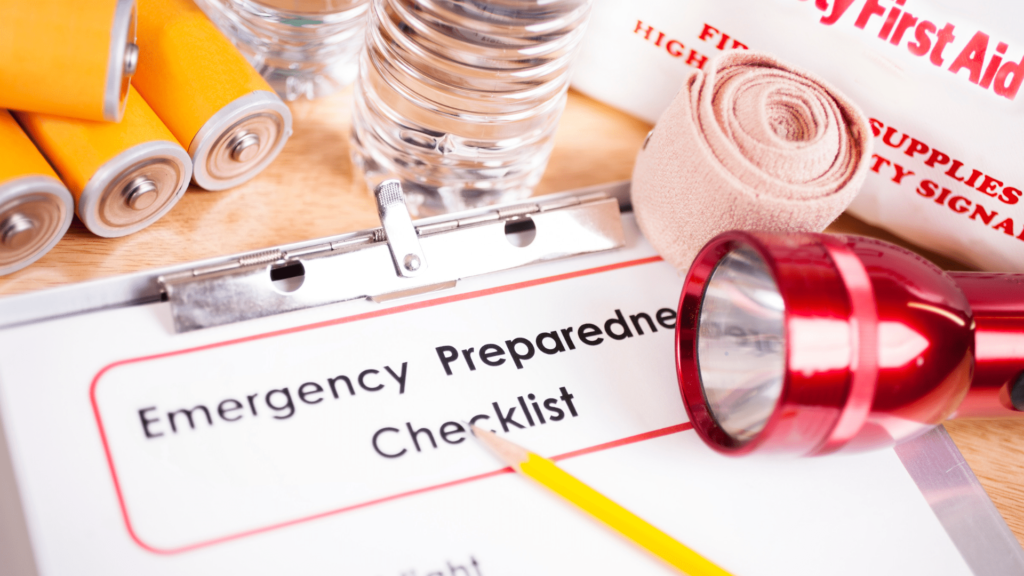In today’s unpredictable world, being prepared for emergencies is more crucial than ever. As Benjamin Franklin once said, “By failing to plan, you are preparing to fail.” This quote holds true, especially when it comes to emergency preparedness in Canada. With extreme weather events like natural disasters, and other unforeseen circumstances becoming more frequent, having a comprehensive survival guide can make all the difference.
In this blog, we will explore the ultimate survival guide for emergency preparedness in Canada. This comprehensive guide outlines essential steps to take, including creating an emergency kit, developing a communication plan, and familiarizing oneself with local emergency procedures. It emphasizes the significance of staying informed, remaining calm during crises, and practicing evacuation drills. By following this survival guide and having a well-thought-out plan, Canadians can safeguard themselves and their loved ones, minimizing the impact of emergencies and increasing their chances of survival.
Don’t leave your future to chance – start planning today and be prepared for whatever comes your way in these four steps:
Step 1 – Analyze and Note the Potential Risks

The first critical stage in the ultimate survival guide for emergency preparedness in Canada is to analyze and note the potential threats particular to your region. Canada is subjected to a wide range of emergencies, including severe weather events such as blizzards, floods, and wildfires. You can uncover potential hazards in your area by doing a thorough risk assessment. Consider geographic location, historical data, and local weather patterns. This analysis will assist you in understanding the possibility and severity of various situations, allowing you to modify your emergency preparedness plan accordingly. It is critical to acquire information from credible sources, such as government agencies and local authorities. Recognising the hazards allows you to take proactive precautions such as strengthening your property, getting suitable insurance, or selecting a security system. Remember, a comprehensive understanding of potential risks is the foundation of effective emergency preparedness in Canada.
Top 3 situations to be prepared for in Canada:
- Severe Weather Events: Canada experiences a wide range of severe weather, including blizzards, ice storms, hurricanes, and tornadoes. Be prepared for power outages, and transportation disruptions, and ensure you have supplies to sustain you during these events.
- Flooding: Floods can occur due to intense rainfall, snowmelt, or coastal storms. Canadians should be prepared for potential flooding by having a plan, securing their property, and having emergency kits ready.
- Wildfires: Certain regions in Canada are prone to wildfires, especially during dry seasons. Stay informed about fire risks in your area, create a defensible space around your property, and have an evacuation plan in place.
Step 2: Create an Emergency Communication Plan

A well-defined communication plan is critical when it comes to emergency preparedness in Canada. Communication is critical during a crisis to ensure the safety and well-being of your loved ones. Following point are recommended to make an effective communication plan:
- Begin by establishing a central meeting location where family members can reach easily and safely in the event of an evacuation. Establish backup meeting sites in case the primary one is unavailable.
- Assign an out-of-town contact person to whom everyone can approach for updates and vital information.
- Maintain a printed list of emergency contacts and make sure that each family member has a copy of this contact’s phone number.
- Learn about your local emergency alert services, such as local radio stations or mobile applications.
- Set procedures for checking in and exchanging updates during emergencies and discuss communication protocols.
- Review and practice your communication strategy with all family members on a regular basis to ensure that everyone understands their roles and responsibilities.
With a well-thought-out emergency communication strategy, you may improve coordination, reduce confusion, and boost the safety of your family during crucial situations.
Be Prepared for Any Emergency!
Step 3: Build an Emergency Kit

Building a comprehensive emergency pack is an essential aspect of emergency preparedness in Canada. An emergency pack contains vital materials that will keep you and your family alive during a disaster. Nonperishable food, bottled water, a first aid kit, flashlights, batteries, a portable radio, blankets, and personal hygiene goods should all be included.
It is recommended to store the emergency kit in an easily accessible location, like your front-hall closet, in a backpack, duffle bag, or suitcase with wheels. Your emergency pack may become bulky/cumbersome if you have a large family. Separating some of these goods into different backpacks is an excellent idea.
Consider browsing Coast2Coast’s first aid kits and supplies shop to ensure you have high-quality and dependable materials. We provide a comprehensive choice of first aid kits that are high-quality and tailored to your individual requirements.
Remember to tailor your emergency kit to your family’s exact needs as well as any special threats in your area. Check and update your kit on a regular basis to ensure that products are not expired and are in functioning order. You may improve your preparedness and resilience in the event of calamities by assembling a well-stocked emergency pack. Visit Coast2Coast’s first aid kits & supplies store today to begin assembling your emergency kit.
Step 4: Practice and Review

The road to effective emergency preparedness in Canada does not end with the creation of a plan and the gathering of supplies. Regular practice and review are essential for maintaining the effectiveness of your preparatory efforts. Drills with your family to practice emergency scenarios such as evacuations or sheltering in place should be conducted. This practice will help everyone become acquainted with their duties and responsibilities, generating a sense of preparation and confidence.
Furthermore, go over your emergency plans, contact information, and communication methods on a frequent basis. Any changes, such as new emergency protocols or contact information, should be updated, and all family members should be made aware of these changes. Remember what Benjamin Franklin wisely said: “By failing to plan, you are preparing to fail.” Regular practice and review reinforce the value of preparedness and improve your chances of managing emergencies successfully. Stay proactive, prepared, and ready to confront whatever obstacles may arise.
Why Choose Coast2Coast?
We hope that this survival guide for emergency preparedness has helped you understand how to deal with emergency circumstances. If you want to learn more about any area of emergency preparedness, Coast2Coast First Aid & Aquatics provides a variety of First Aid and CPR/AED training programmes. These classes will teach you how to administer first aid, perform CPR, and use an AED, among other things. Given the unpredictability of situations and their possible impact on you or those in your neighborhood, enrolling in a First Aid and CPR/AED training course can provide you with the skills necessary to provide life-saving assistance to those in need.



















